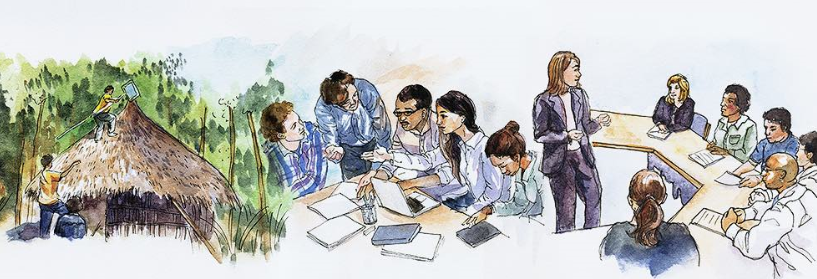Speeches Shim
FEATURED |
|---|
|
LANDSCAPE ANALYSIS OF LEARNING AGENDAS: USAID/WASHINGTON AND BEYOND (2017) This report surveys the landscape of learning agendas at USAID/Washington and beyond to help us understand where and how the Agency understand how Operating Units are using learning agendas to guide their work, and how these types of efforts can be enhanced and expanded. This toolkit provides guidance and resource materials on CLA for all stages of the Program Cycle |
ALSO SEE |
|
This synthesis of an online lab session in 2013 provides multiple examples of how USAID assistance is programming in response to its broadening commitment to a learning and adapting culture. |
According to USAID’s Program Cycle guidance (ADS 201.6.5), “Strategic collaboration, continuous learning, and adaptive management link together all components of the Program Cycle.” Integrating CLA into our work helps to ensure that our programs are coordinated with others, grounded in a strong evidence base, and iteratively adapted to remain relevant throughout implementation. The systematic application of CLA approaches, led by people who have the knowledge and resources to carry them out, enables USAID to be an effective learning organization and thereby a more effective development organization. In the Monitoring, Evaluation and Learning Section of a CDCS the Mission must include a brief discussion of the Mission’s overall priorities and approaches to monitoring, evaluation and learn.

In its CLA Toolkit, USAID explains CLA by breaking down this acronym into its component parts:
- Collaborating intentionally happens when USAID and stakeholders identify areas of shared interest and work together where it makes sense, reduce duplication of efforts, and share knowledge across sectoral and institutional boundaries. Collaboration helps break down sectoral and institutional stovepipes; validates USAID programs against experience and local/contextual knowledge; and enhances the ability of partner country governments, organizations, commercial actors, and individuals to define and pursue their development agendas while informing USAID’s work.
- Learning systematically takes place when USAID and stakeholders utilize a variety of sources of information (including data from monitoring, portfolio reviews, findings of research, evaluations, analyses conducted by USAID or third parties, knowledge gained from experience) and take time to pause and reflect on implementation. This helps us draw on evidence and experience from many sources and employ participatory development methodologies that catalyze learning for ourselves and our stakeholders.
- Adapting effectively happens when USAID and partners apply learning and make adjustments during implementation to increase the impact of development assistance
The CLA section in a Mission’s CDCS provides an opportunity for the Mission to explain CLA in its own context, by describing its current practices and CLA priorities for the strategy period.
The CLA Section in a CDCS need not be long. It is meant to be a preview of the Mission’s PMP Collaborating, Learning and Adapting (CLA) Plan that will set forth processes and activities the Mission will use to help ensure that programming is coordinated, grounded in evidence, and adjusted as necessary to remain effective throughout the CDCS implementation period. The direction set for CLA in the CDCS is also intended to influence project design and the way in which Mission staff integrate Mission-wide CLA approaches and priorities at the project level in the learning component of their Project MEL Plans.
| << Impact Evaluation Opportunities Template | Up | CDCS Performance Management Budget >> |
ProjectStarterBETTER PROJECTS THROUGH IMPROVED |
A toolkit developed and implemented by: For more information, please contact Paul Fekete. |

Comment
Make a general inquiry or suggest an improvement.